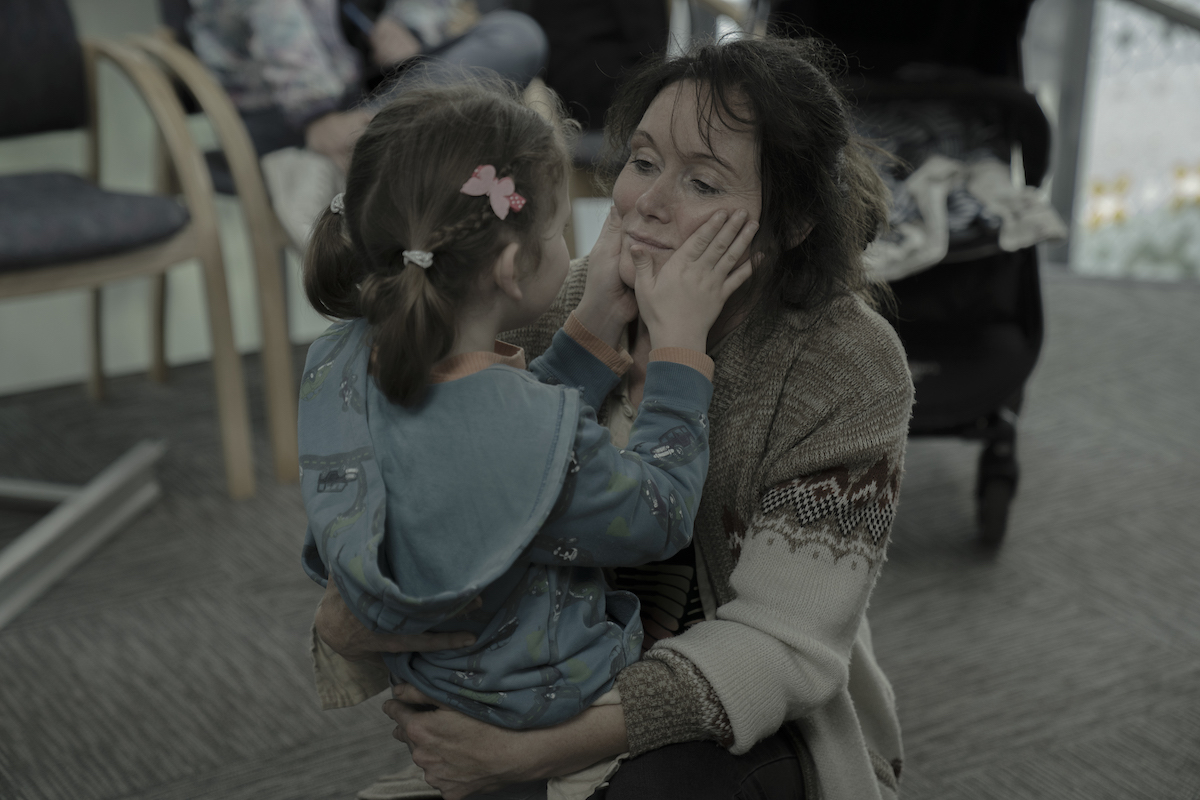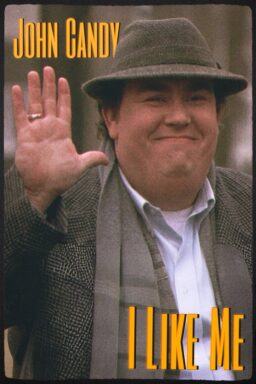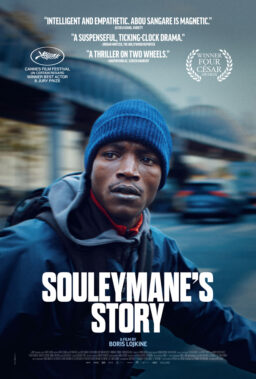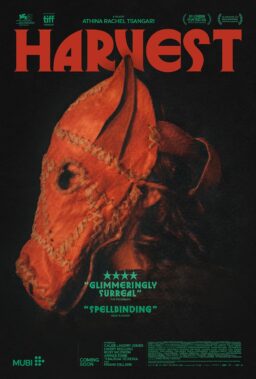Two of the finest films receiving their U.S. release this year each provide riveting showcases for Essie Davis, the brilliant Australian actress who earned international raves for her star turn in Jennifer Kent’s 2014 modern horror classic, “The Babadook.” Davis delivers another Oscar-worthy performance in Gaysorn Thavat’s sublime directorial debut, “The Justice of Bunny King”—which opens in select theaters this Friday, September 23rd, and On Demand on Friday, September 30th—where she plays the titular New Zealand woman who attempts to rescue her niece, Tonyah (Thomasin McKenzie, never better), from her abusive stepfather.
Another film guaranteed to earn a spot on my best of the year list is “Nitram,” which is now streaming on AMC+ and available for rental. It is directed by Davis’s husband, Justin Kurzel, and stars Caleb Landry Jones who earned the Best Actor prize at Cannes for his portrayal of Martin “Nitram” Bryant, the deeply troubled young man who carried out the Port Authority massacre—the worst in Australia’s modern history—which killed 35 people and wounded 23 others in 1996. Davis completely disappears into the role of a woman who befriends Bryant in the days leading up to the shooting, while another towering Aussie talent, Judy Davis, is equally spellbinding as his bewildered mother.
I recently had the privilege of interviewing Essie Davis via Zoom about these two extraordinary films, the lengths she has taken to protect young actors from harrowing subject matter and the urgency of “Nitram” amidst America’s current gun violence epidemic.
How did you and Gaysorn, whom I recently interviewed, go about connecting over your shared vision of the character of Bunny King?
The first version of the script that Gaysorn sent to me just blew my mind when I read it. It was so powerful and funny and boisterous, and I just loved that Bunny was full of fight. There were some problems at the end that needed resolving, but when the film was financed a year later, it had been through so much script development that it had been ironed out within an inch of its life and quite vacuumed of soul. When I turned up to do all my preparation work on it, I said, “This isn’t the script I’ve joined you to make. The original script, even though it’s got flaws in it, is the one with fire and passion.” Gaysorn completely agreed with me, and although there was a lot of other preparation going on, we ended up pulling out of the garbage bin all of this gold that had been thrown away.
It was quite wonderful to find the writer’s original fire and joy. There is a hopefulness in the unstoppable kind of drive that Bunny has to succeed, to problem solve and to make things work in order to be with her kids. No matter how hard she gets shoved down, she keeps on standing up again. Both Gaysorn and I were definitely on the same page in terms of how important it was to have this hope in the film and for it not to just be a bleak story, because it’s so many women’s stories. So many women are in this situation. Even though Bunny makes some terrible mistakes, she is a hero, and I just love that. She chooses to fight and stand up for her niece when she could quietly make her own life slightly better instead.
What was it like immersing yourself in the culture and language of New Zealand?
I spent a long time working on the accent because even though Australian is very near to it, it’s completely different and quite tricky. There are also multiple classes within the accent, so I tried to find the right one that was working class but not Maori nor really contemporary. I did a lot of work inside and outside all at the same time, and that included finding the outfits and makeup—such as that little stab of an eyeliner—for my character. I met a lot of women and watched a lot of documentaries. We did try to go into the prison system, but it proved impenetrable. I was quite terrified of being the only Australian on a fully Kiwi set. The film had a very female-led crew comprised of people from a lot of different backgrounds, and I was getting a lot of “thumbs up” from many different people.
It’s really important for me to be completely immersed and believable and truthful as the character and not just look like someone having a go. I’ve got see it from the outside as much as feel it from the inside, and it was really delightful going through that process of meeting in real life the people who run the Dress for Success program in New Zealand. It was really fantastic going in there and working with the volunteers who choose outfits for women going on job interviews. In Bunny’s case, she’s trying to get a home. When people step outside of their own skin and put on a costume, it transforms how they feel about themselves and changes how other people see them as well. That’s what I loved about Bunny’s journey. She ultimately decides against selecting a dress and puts on a suit instead. I felt like I was John Travolta in “Saturday Night Fever,” getting ready to go out in my superhero outfit. It gave me a whole different way of being in Bunny’s skin.
How do you approach a scene such as Bunny’s pivotal phone call, where she summons the fierce strength to conceal her despair from her daughter?
It all comes from the journey of the character. All she wants is to be with her daughter and her son for her daughter’s birthday, and to give her a really special party. Even though she has essentially saved her daughter’s life, she feels that she has let her down by doing what she did in order to protect her, which has resulted in Bunny being taken away from her child. Having gone to such lengths to make that party for her, it’s all about her little girl, and Amelie Baynes, who played my daughter, was incredibly brilliant. We had a connection that felt so profound. Bunny wanted it to be a really happy day for her daughter, even though it didn’t go the way she planned. This is what moms do—or rather, what this mom does.
How have you approached working with children when filming harrowing scenes in both this film and “The Babadook”?
I think there has to be a huge amount of protection because this film is going to be a memorable part of their lives. Certainly there’s a huge amount of having fun playing make believe with them. I would do make believe scene acting with Noah Wiseman, who played my son in “The Babadook.” There’d be times where we’d be driving along in the car—Jennifer would be in the passenger’s seat, I’d be driving and he’d be in the backseat—and at one point, Jen asked, “Do you ever have tantrums?” Noah said, “No,” so Jen replied, “Really? I have tantrums, and when I have a tantrum, I go like this,” and she acted it out before asking, “What do you do, Essie?” I said, “Well, when I have a tantrum, I go like this,” and acted it out. Then we asked him, “Can you do that?”, and what he ended up doing is all on camera.
After a scene like that, we’d all have a laugh or a hug, and then he’d go on his rocking horse or play with his Legos. Of course, there needed to be a huge amount of protection on a film like “The Babadook.” I would do particular scenes in multiple ways. I would do it with Noah while saying different lines. I would do it with him while mouthing my lines if I was screaming at him and literally ADR them in afterwards. Or I would say something like, “Go on, eat dirt,” and then whenever we’d cut, I’d act joyful with him. Then Noah would leave and I would do the scene again with a 20-year-old man on his knees, and I would deliver the dialogue live.
On “Bunny King,” Amelie was a genius. She had lines to learn and she would do them, but quite often, we would be improvising. When we were in that plastic playhouse, we would just play and they’d have to film us. It was quite wonderful because we got on so well. She could go in and out of the lines and into our play. I was having Bunny play with dolls, acting as if they were our family in our own little home. She just loved me and I loved her. We have those amazing moments where she’s touching my face, and when they go to take her away, she had a full tantrum, but it was playacting. It felt real but it wasn’t traumatic. She didn’t want to stop playing with me. So magic like that can happen, particularly with children who love playing and being in the moment.
What are your thoughts on Thomasin McKenzie as a scene partner, beginning with your initial collaboration in Justin Kurzel’s “True History of the Kelly Gang”?
She’s absolutely gorgeous and very simple. Thomasin doesn’t necessarily feel the need to be analytical about things. We’d be talking about our favorite board games, and then we’d do the scene. [laughs] The first time we met each other was on “Kelly Gang,” and my character was fiercely protective of her son with this girl. We only had two very brief meetings over the course of two days, and it always had a very aggressive kind of energy. So it was so delightful to then go onto “Bunny King” with her and to just be sitting around blowing up balloons and cutting cake. She is delightful, easy, genuine, truthful, and I really love working with her.
What are your thoughts on the timeliness of “Nitram” through the prism of America’s current crisis with gun violence?
“Nitram” is based on a massacre that happened in Tasmania where I grew up 25 years ago, and it actually occurred the year that Justin and I got together. It was world-shattering at the time. If there were mass shootings happening in America back then, they were not reaching international news. The massacre at Dunblane Primary School in Scotland made international news two weeks earlier, and the film suggests that it may have been an inspiration to the shooter, Martin Bryant. Within ten days, our gun laws had changed. There was a gun amnesty program where anyone could bring in their guns—both legal and illegal—and give them to the police or the government. All of these guns were taken away, and hard rules were put into place. Some of them were not—they were just decided upon but not necessarily enacted by each of the states—but it made a huge difference because we haven’t had anything like that since.
Every time a mass shooting happens in America, the Port Arthur massacre is used as an iconic example of what Australia did to change gun laws and is constantly cited as a reference of what America could do. Justin had been talking with the film’s screenwriter, Shaun Grant, about writing a story on this topic for quite a long time, but it’s highly, highly sensitive in Australia, particularly Tasmania. No one talks about it. It’s something that people want to sweep under the carpet and hide away, in part because a majority of citizens know someone who was either killed or was one of the first responders. 25 years later, there are so many people who don’t even know that this happened. People who were little or were born since never heard of it, and of course, many international audiences aren’t aware of this story, unless a similar tragedy happened close to them.
“Nitram” is an incredible piece of work. It’s a really small film, but it’s got such heart and such an important story to tell that is incredibly timely. Shaun was living in Los Angeles when his wife was about to go to the supermarket, and then decided not to go. She was diverted by an audition or something. A mass shooting ended up occurring in that supermarket at the exact time she had originally planned on being there. Shaun sat down and went, “This is enough. I don’t want to live in this world anymore.” His film is sensitive and incredibly powerful because it’s not about monsters. It’s about people who you know and live with and walk next to on the sidewalk, people who fall through the gaps and parents who don’t know quite how to support their child. People who are really lonely or bullied or dysfunctional and find themselves at the worst moment in their emotional life can just walk into a gun shop and be sold any number of weapons for a good price. I think it’s time that America stood up and said no.
Judy Davis is a hero of mine, in part because she did the best channeling of Judy Garland on film, by far, in Robert Allan Ackerman’s “Life with Judy Garland: Me and My Shadows.”
I agree, what a performance! Everyone should watch her play Judy Garland. She was my hero as well, and one of the most important actresses I looked up to while growing up. I remember seeing “My Brilliant Career” and deciding that I would try modeling my career on her own. I’d say to myself,“Judy Davis doesn’t do television, I won’t do television!” [laughs] Of course, things have changed quite a lot, and for Judy now too. But she’s an incredible actress and in “Nitram,” she brings something to the role of his mother that is so exhausted and lost and resigned. She tries to make life function for him, with him, and is sort of on her own, even though she also has Anthony LaPaglia, who plays his beautiful dad, but he’s such a facilitator in trying to keep a happy, tantrum-free child.
We are drawn to the characters in both “The Justice of Bunny King” and “Nitram” because, like so many Scorsese protagonists, they don’t play by the rules and have a humanity that is relatable.
I admire both Gaysorn and Justin as filmmakers. They make the kind of films I love to watch as well as bring to life because they are really complex. I’ve heard a couple of people who saw “Bunny King” and said, “That’s outrageous, that wouldn’t happen!” Well, “Dog Day Afternoon” was about a bank robber who barricaded hostages because he wanted to pay for his boyfriend’s sex change operation—and that really did happen. “Bunny King” isn’t as far-fetched, and I don’t think it tells a far-fetched story at all. It’s about people acting in extreme desperation to make something good and right happen.












